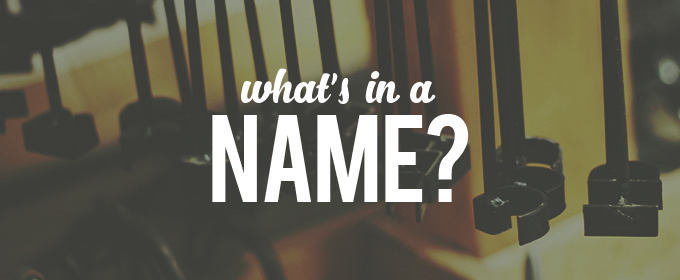The following is a Guest Post from PT Academy staff member and stair running athlete, Chris Price.
What’s in a Name?
Creating a name for your new personal training business can be one of the most difficult hurdles to overcome when setting yourself up. Ultimately you want something that is memorable and meaningful. It should be an appropriate representation of your brand: something that encompasses the promise and values that you have established your business to live by.
By following these helpful tips, you will avoid some of the stress involved in this important decision and ensure your business name does your business justice.
Before you start brainstorming – or making any final decisions – you should first establish what you want your business, and ultimately your brand, to be. This will give you some direction towards the words, phrases and feelings that your future brand will evoke.
As a father, I know that when naming a baby we painstakingly deliberate about what a possible name denotes, implies, sounds like and whether it’s easy to pronounce, befits the newborn’s personality and is unlikely to make them a laughing stock. The same level of care needs to be taken with your business name.
Having a bit of fun when naming your business can often enhance its appeal and improve its success – providing you get it right.
To help with your decision, first do some research to see what’s already out there. While Fitness Australia does not cover all personal training businesses, there are over 3300 registered names for you to check. When you have a few names that you are contemplating, an official check via the ASIC Business Name Register is the next step.
While it’s nice for a business name to hold personal significance, ultimately it must make sense to your target audience. If you are set on who your target audience is and what type of clients you want to service then pay close attention to what words they use to describe themselves, their interests and their goals. This could provide you with the answer for a name that emotionally connects you to your future clients and start a community of followers.
Ask yourself what you want your name to communicate. It should reinforce the key elements of your business. The more your name communicates about your business the less effort it takes to explain it both when talking to your prospective clients and when creating marketing material.
Resorting to awkwardly constructed or purposefully misspelled names can sometimes distract from your brand’s key values – but it’s not to say they don’t work. They may simply need more marketing to convey their true meaning.
Shorter names are easier to remember and are easy for clients to pronounce. As a designer, I also find short names easier to develop into a visually attractive logo. With most marketing done online with gravitars and profile images that are only a few pixels in size, the more compact the design, the better the application.
Choosing a name that has an available.com or .com.au domain name can be tricky, but not always necessary. Providing you can find a URL that has key elements of your business name, often the connection is made by clients.
So what types of names are there? The following five categories will provide some examples and direction for your business name:
Descriptive.
These names use words that project a style of training or a result, something that describes the experience of training with that business. This category is the most popular with personal training businesses.
Examples include Evolve Health & Fitness, Revolution Personal Training, Skulpt Fitness and Training for Warriors.
Personal.
These names use a family name or reference to create a strong association with the business. Heading in this direction will often ensure your business name is unique but you need to be definite in what your business is. Are you naming yourself as a business or are you naming a personal training business that you operate. There is a distinct difference. If you envisage building your business to include other trainers then using your own name may cause confusion if you eventually want to step back from the day to day operations.
Symbolism.
Here I am referring to businesses that use ancient or non-English language to represent a belief or symbolise the values of the business.
In Bondi, Sydney there is a personal training studio called AGOGA (pronounced ah-go-jyah). It is the Spartan word for the education and training regimen used to create “a class of warrior citizens”.
Geographical.
From an organic online search perspective this category can be very successful. Hobart Performance Centre, Peninsula Bootcamp and South Yarra Crossfit are some examples. For prospective clients searching for fitness options in their area there is no confusion if you are lucky enough to secure your location as part of your business name. They figuratively speak for themselves.
Acronyms.
Making up a new word with elements of words that describe what your business is about can be very rewarding, providing it is short and catchy. Sometimes this can create intrigue from prospective clients, but if you get it wrong can also create unwanted confusion.
MOBI Health & Wellness is derived from “Movement By Intelligence” and “OD on Movement” is short for Overdosing On Movement.
Once you have decided on your business name, check out the YouTube clip below that gives more information on how to register your business name and other registration needs of your new business
Just note that when your name is registered as a business it only identifies you as a trading entity. If you want to fully protect your brand’s identity then also registering for a trademark that includes your logo is advisable. While this is another big step in establishing your business, you can start by doing further research here.
